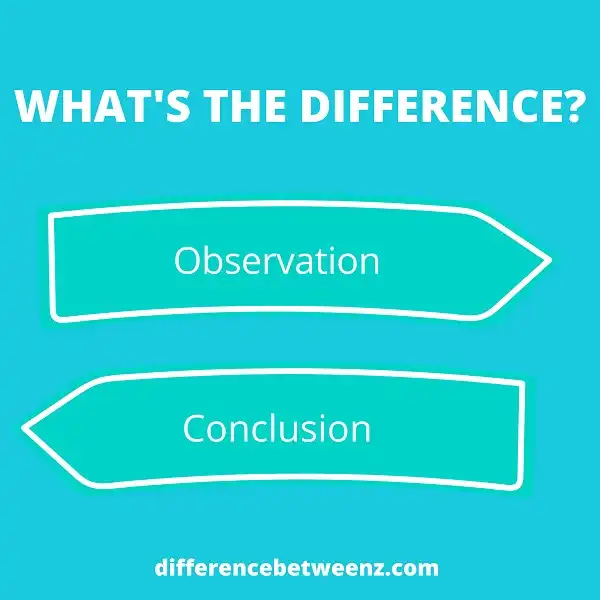When working with data, it is important to be able to distinguish between observation and conclusion. Observations are the facts that we record, while conclusions are our interpretations of those observations. In order to ensure that our data is accurate and reliable, it is critical that we can make this distinction clearly. This allows us to ensure that our conclusions are based on the data rather than on personal biases or preconceived notions. By doing so, we can develop a better understanding of the world around us and make informed decisions accordingly.
What is Observation?
Observation is the process of gathering information about an event, object, or person through the use of our senses. In order to observe something, we must pay attention to it and take note of its features. Observation can be done passively, such as when we are simply taking in our surroundings, or actively, such as when we are focused on a specific task. When observing something, we may use all of our senses, or just one. For example, when looking at a painting, we may take note of its color, shape, and texture. When listening to a song, we may pay attention to its melody and rhythm. Observation is an important skill in many fields, such as science, art, and design. By observing the world around us, we can gain a deeper understanding of it.
What is Conclusion?
The conclusion is a deduction by reasoning from given premises. Conclusion arrives at a definite and logical end, generally by applying rules of inference. The conclusion follows from evidence or premises. The conclusion must be consistent with the premises. The conclusion is the end result of a line of reasoning. A good conclusion is one that is both relevant and believable. The conclusion must follow logically from the premises and it must be relevant to the argument being made. A conclusion is an opinion based on insufficient evidence.
Conclusions can be arrived at through inductive or deductive reasoning, or through generalization from past experiences. In order for a conclusion to be valid, it must be logical and supported by evidence. However, even if a conclusion is well-reasoned and supported by evidence, it may still be false. This is because all conclusions are based on assumptions, which may turn out to be false. Therefore, it is important to always keep an open mind and to continue to gather evidence in order to verify or disprove a Conclusion.
Difference between Observation and Conclusion
Observation is the process of gathering data about an event, activity, or phenomenon. This data can be collected through direct observation or indirect observation (e.g., reading a report about an event). Once the data has been gathered, it can be analyzed to identify trends, relationships, and patterns. A conclusion is a statement that is based on the data that has been collected and analyzed. In other words, a conclusion is an interpretation of the data that has been observed. Observation and conclusion are two important steps in the scientific method. Observation allows scientists to gather data about the world around them, and a conclusion allows them to make sense of this data.
Conclusion
The difference between observation and conclusion is an important distinction to make when analyzing data. By understanding the difference, we can avoid jumping to conclusions and instead use observations to form logical hypotheses. This is an important skill for any scientist, but it’s also relevant in our everyday lives. When we see a pattern or trend, it’s tempting to assume that it will continue into the future. However, by using the scientific method to analyze information, we can more accurately predict what will happen next.


